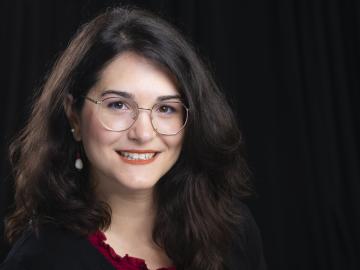Filter News
Area of Research
- (-) Clean Energy (42)
- (-) Materials (45)
- Advanced Manufacturing (3)
- Biology and Environment (17)
- Fuel Cycle Science and Technology (1)
- Fusion and Fission (11)
- Fusion Energy (1)
- Isotope Development and Production (1)
- Isotopes (3)
- Materials Characterization (2)
- Materials for Computing (3)
- Materials Under Extremes (1)
- National Security (9)
- Neutron Science (11)
- Nuclear Science and Technology (8)
- Sensors and Controls (1)
- Supercomputing (22)
News Topics
- (-) Advanced Reactors (3)
- (-) Bioenergy (17)
- (-) Grid (10)
- (-) Machine Learning (5)
- (-) Materials (44)
- (-) Nuclear Energy (5)
- (-) Security (3)
- (-) Transformational Challenge Reactor (3)
- 3-D Printing/Advanced Manufacturing (33)
- Artificial Intelligence (6)
- Big Data (1)
- Biology (6)
- Biomedical (4)
- Biotechnology (2)
- Buildings (8)
- Chemical Sciences (20)
- Clean Water (1)
- Climate Change (8)
- Composites (6)
- Computer Science (13)
- Coronavirus (4)
- Critical Materials (10)
- Cybersecurity (4)
- Decarbonization (11)
- Energy Storage (36)
- Environment (17)
- Exascale Computing (2)
- Fossil Energy (1)
- Frontier (2)
- Fusion (2)
- High-Performance Computing (4)
- Isotopes (5)
- ITER (1)
- Materials Science (39)
- Mercury (1)
- Microscopy (12)
- Molten Salt (2)
- Nanotechnology (22)
- National Security (5)
- Net Zero (1)
- Neutron Science (23)
- Partnerships (11)
- Physics (14)
- Polymers (9)
- Quantum Computing (1)
- Quantum Science (10)
- Renewable Energy (1)
- Simulation (1)
- Summit (3)
- Sustainable Energy (25)
- Transportation (18)
Media Contacts

Ho Nyung Lee, a condensed matter physicist at the Department of Energy’s Oak Ridge National Laboratory, has been elected a Fellow of the Materials Research Society.

Zheng Gai, a senior staff scientist at ORNL’s Center for Nanophase Materials Sciences, has been selected as editor-in-chief of the Spin Crossover and Spintronics section of Magnetochemistry.

Jordan Hachtel, a research scientist at ORNL’s Center for Nanophase Materials, has been elected to the Board of Directors for the Microanalysis Society.

Three scientists from the Department of Energy’s Oak Ridge National Laboratory have been elected fellows of the American Association for the Advancement of Science, or AAAS.

Jingsong Huang, a staff scientist at ORNL’s Center for Nanophase Materials Sciences, has been selected as an associate editor of Frontiers in Soft Matter.

Anne Campbell, an R&D associate in ORNL’s Materials Science and Technology Division since 2016, has been selected as an associate editor of the Journal of Nuclear Materials.

Eva Zarkadoula, an R&D staff member at ORNL’s Center for Nanophase Materials Sciences, has been appointed to the early career editorial board of Nuclear Materials and Energy.

Seven scientists at the Department of Energy’s Oak Ridge National Laboratory have been named Battelle Distinguished Inventors, in recognition of their obtaining 14 or more patents during their careers at the lab.

While studying how bio-inspired materials might inform the design of next-generation computers, scientists at ORNL achieved a first-of-its-kind result that could have big implications for both edge computing and human health.

Although blockchain is best known for securing digital currency payments, researchers at the Department of Energy’s Oak Ridge National Laboratory are using it to track a different kind of exchange: It’s the first time blockchain has ever been used to validate communication among devices on the electric grid.

